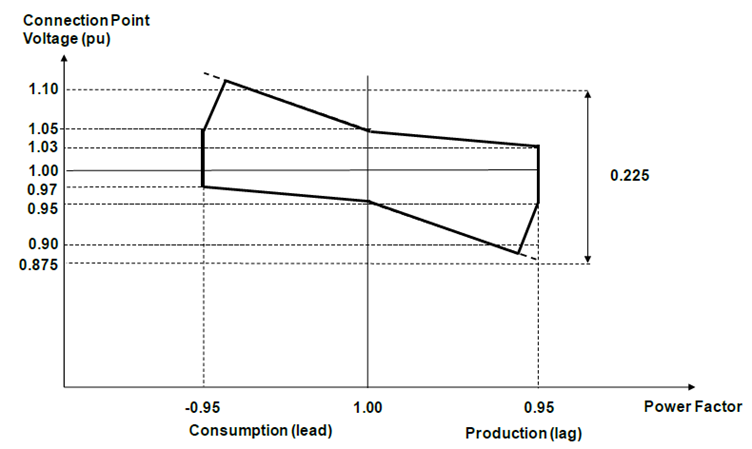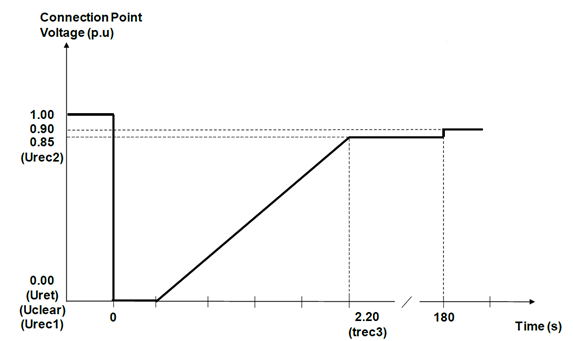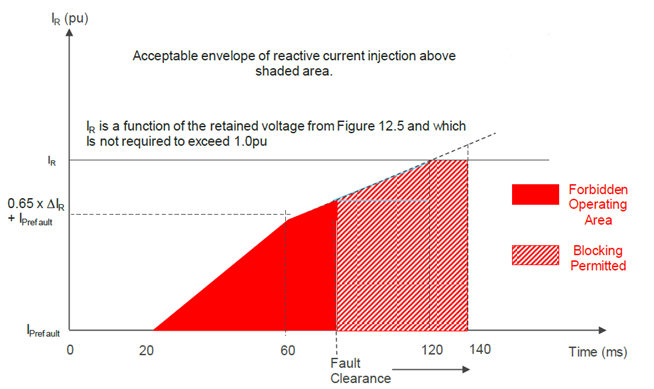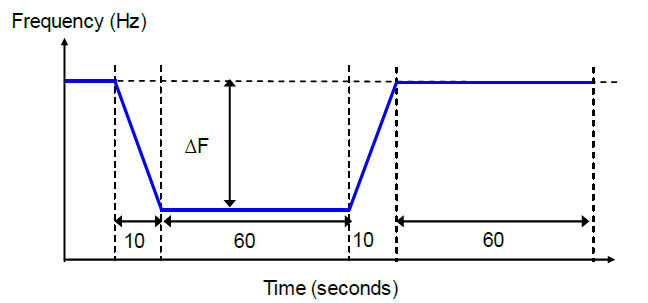The G99 Grid Code plays a vital role in ensuring the smooth connection of electrical assets to the UK’s electricity grid. Failure to meet these requirements can jeopardise new energy projects’ financial viability and success. As we transition to a more sustainable energy landscape, ensuring G99 compliance is essential to safeguard the grid’s resilience while supporting the nation’s increased power demand.
In this article, we’ll discuss what the G99 requirement is and the typical process for achieving grid code compliance, highlighting the risks to your power generation project by not adhering to the standard. We will also explore how these risks can be mitigated via power system studies.
Key Takeaways:
- What is G99 and why it matters
- The compliance process
- Implications of non-compliance
- How to ensure seamless grid connections
Understanding the G99 Grid Code
What is G99?
ENA Engineering Recommendation G99 establishes the procedures and requirements for connecting power generating modules (PGMs) to the electricity grid. It applies to all new energy projects in the UK that are to be connected to the distribution network (up to 132kV), including:






Compliance with the G99 grid code is compulsory for any project seeking grid connection, making it a vital consideration during the planning and design phases. It ensures that each type of power generation, regardless of size or complexity can meet the technical requirements for maintaining grid stability and safety.
The Grid Compliance Process
G99 provides several benefits to the UK’s power distribution network. Notably, the standard facilitates the growth of the renewable energy market, streamlining the grid connection process for new projects. Additionally, it helps to prevent grid overload and maintain a dependable supply of electricity.
All grid connection applicants are expected to provide detailed technical information and evidence of compliance at various project stages, from initial design to commissioning. For example, generators must provide a power generating module document (PGMD), which evolves throughout the project lifecycle.
The documentation must demonstrate that your electrical assets can match G99’s technical requirements, including capabilities such as:
- Voltage Stability
- Frequency Control
- Fault-Ride Through
- Reactive Power Support
Non-compliant power systems are given a temporary grace period in which assets can remain connected to the grid for up to 56 days. Failure to take remedial actions and work towards achieving compliance during this period could result in disconnection from the grid.
Grid Code Considerations
Generator Types:
The latest standard categorises power generating modules into four categories (Type A, B, C, and D). These types are based on aspects such as their capacity and connection complexity. Each generator type has its specific requirements and procedures for grid connection as summarised below:
- Type A Generators:
Type A generators are small-scale power generating units with capabilities typically less than 1 MW. Compliance for Type A generators is relatively straightforward, entailing basic operational safety and grid compatibility. For smaller power systems, standard application forms and technical data sufficiently demonstrate compliance to distribution network operators (DNOs). - Type B Generators:
Ranging from 1 MW to 10 MW, Type B generators go through a more detailed compliance process. This includes power system studies to assess how these generation systems could affect the grid once connected. These generator types include larger commercial and industrial power systems like mid-sized wind farms and biomass plants. - Type C Generators:
Type C generators have capacities ranging from 10 MW to 50 MW and are typically larger renewable energy projects such as solar PV and offshore wind farms. Given their scale, these electrical assets require more extensive analysis as their output can significantly impact grid stability. Close collaboration with DNOs and in-depth technical information is required to safeguard smooth operations and grid resilience. - Type D Generators:
Exceeding 50 MW in capacity, Type D generators face the most stringent compliance procedures. These projects are large in scale and have the biggest impact on the UK power grid. As such, generators must undertake multiple stages of power system analysis and provide extensive documentation with ongoing maintenance to guarantee compliance with the G99 grid code.
What Does Non-Compliance Mean for You?
Non-compliance with the G99 standard can significantly impact the immediate operation of power systems. Moreover, it can hinder the long-term viability of your energy projects and business relationships. Some of the most notable consequences include:
- Refusal of Connection
Submitting a G99 application form is a prerequisite for grid connection. If a generator does not complete this procedure, their connection request may be denied, regardless of their capacity to demonstrate compliance. - Operational Risks
Adhering to the grid code is crucial to avoid significant operational threats, such as system failures and disconnections. Non-compliant equipment may struggle to operate under fluctuating grid conditions, increasing the risk of electrical hazards like overvoltages and frequency variations. - Regulatory Penalties
The G99 grid code is enforced by Distribution Network Operators (DNOs). Failure to achieve compliance can lead to increased project complexity and costs. Furthermore, this can lead to regulatory action or penalties from relevant authorities like Ofgem and National Grid ESO. - Financial Impact
With imposed fines, costs for remediation, and compensation for losses, the financial implications for non-compliance can be severe. Additionally, it can lead to significant project delays, missed revenue opportunities, and decreased stakeholder trust.
How Can EPS Help?
Ensuring compliance with the G99 Grid Code can be challenging and daunting. Many factors impact a project’s successful integration into the grid, such as the complexity of grid code requirements, incomplete or incorrect G99 applications, and equipment or design issues.
At Engineering Power Solutions (EPS), we have extensive expertise in all aspects of grid code compliance. Our team of power system experts specialise in all generator types and sizes and are fully equipped to conduct a wide range of simulation studies. Our Capabilities extend to but are not limited to:
Load Flow Analysis – We determine the power flow within your electrical network, ensuring the generator’s connection doesn’t cause overloads and voltage issues.

Figure 1 – Reactive Power Capability Requirements
Fault Ride-Through (FRT) – This study evaluates the generator’s ability to remain operational during and after short-duration grid faults, ensuring it can withstand voltage dips and contribute to the overall stability of the grid during disturbances.

Figure 2 – Voltage requirements for Type-D Power Park Modules in FRT analysis
Fast Fault Current Injection (FFCI) – Assesses the generator’s ability to inject current during faults, a crucial capability for maintaining voltage levels and restoring grid stability.

Figure 3 – Reactive current injections requirement for voltage depressions for faults with a duration of ≤ 140ms
Limited Frequency Sensitive Mode – Over-Frequency (LFSM-O) – Examines the generator’s ability to reduce output when over-frequency events occur. It ensures the system’s frequency can be lowered to prevent equipment damage and maintain a balanced grid.
Limited Frequency Sensitive Mode – Underfrequency (LFSM-U) – On the other hand, LFSM-U studies the generator’s ability to increase output during underfrequency events. When the frequency drops below the nominal value, this study helps ensure grid stability and prevention of blackouts.

Figure 4 – LFSM-U Step response simulation
Stability Studies – Analyses the generator’s dynamic response to disturbances and its ability to maintain synchronism with the grid. Key areas include:
- Transient Stability Studies – Evaluate the generator’s response to large disturbances, ensuring it can recover without losing synchronism.
- Voltage Stability – Ensures the generator can maintain acceptable voltage levels under different load conditions.
- Small-Signal Stability – Assesses the generator’s response to minor perturbations, ensuring stable operation under normal conditions.
Harmonic Analysis – Identifies any harmonic distortions the generator may introduce to the grid and ensures compliance with standards. Harmonics can cause overheating and malfunction of equipment, so this study is essential for maintaining power quality.
De-Risk Your Project Today!
With advanced tools like ETAP, PSCAD, and DIgSILENT, EPS can streamline your grid connection process, guaranteeing that potential compliance issues are addressed early on.
To ensure the safety and compliance of your energy project, contact our grid connection specialists at enquiries@engineeringpowersolutions.co.uk, or please feel free to contact us directly at 01642 987 240.

References
- ENA, Engineering Recommendation G99, Issue 1 – Amendment 10, 4 March 2024, www.energynetworks.org
- ENA, Engineering Recommendation G99, Issue 1 – Amendment 9, 3 March 2022,









